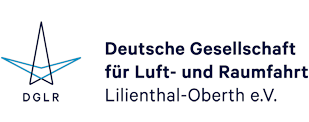DGLR-Publikationsdatenbank - Detailansicht
Autor(en):
R. Schaber, J. Schroeter, F. Armbrüster
Zusammenfassung:
The EU Green Deal describes the objective of climate neutrality for aviation by 2050. New engine concepts are currently investigated to fulfill this objective. Hybrid electric architectures are discussed as one possible solution to further reduce CO2-emissions by combining different energy types to deliver the necessary power for the propulsors. The technology project TELEM, "Technological Enablement of hybrid-electric propulsion systems for manned aircraft through investigation of aerospace electric machinery and its integration into the propulsion system", led by Rolls-Royce and with DLR and MTU as partners, provides the methodological prerequisites for the targeted development of a 70 seated hybrid electric regional aircraft and associated innovative technologies. The project takes a holistic view of all requirements and the necessary boundary conditions to determine an optimal overall system. One objective of MTU’s contribution to TELEM was the creation of a simulation platform for the calculation of hybrid electric propulsion systems. The system comprises propulsors, electric motors, electrical systems, generators, batteries, thermal management systems, gas turbines and nacelles. The thermodynamics and aerodynamics, weights, nacelle geometries, drag, thermal management, emissions and operating costs are considered. This enables a multidisciplinary overall assessment. The simulation platform was built on basis of NPSS (numerical propulsion system simulation), an international standard simulation system tailored to the simulation of propulsion systems. Designing optimal matched components allows to find an overall optimum propulsion system. The proposed methodology consists of the conceptual design of the system components, an assessment of the whole reference mission and the search for the optimum propulsion system by ideal matching of the size of the components across arbitrary operating points. Applying the simulation platform described above the objective is to investigate a serial electric hybrid propulsion system with a technology level of an entry into service in 2035, targeting a commercial 70-seat regional aircraft with a reference range of 400nm (typical mission) and a design range of 1000nm. The paper will describe in detail the rational for the selection of the individual propulsion system design parameters. This includes and starts with the demonstration of the potential for an overall energy advantage for the selected 400 nm mission compared to a conventional regional aircraft with entry into service 2035. The propulsion system as hereby consists of the propulsors, in this case 10 propellers driven by electric motors, the electrical system, consisting of 9 batteries,10 inverters, cables,10 electric motors and a single gas turbine, especially tailored to the needs of a hybrid electric aircraft and the thermal management system, allowing to get rid of the waste heat at minimum cost for the overall system. Assuming the integration of the propulsion system in underwing nacelles, the gas turbine and all other propulsion system elements had to be installed in such a way that the overall system performance is optimal. As the central part of the propulsion system the gas turbine was designed to the special needs of a hybrid electric aircraft: easy to install and maintain, fuel efficient, low production and maintenance cost. To achieve these objectives a 2 spool gas generator with a free power turbine driving the generator was selected with an optimized cycle. Axial radial compressor designs were investigated as well as pure axial compressor configurations. In the end a pure axial configuration with 5 intermediate compressor stages and 6 high pressure compressor stages was selected, driven by a 1 stage high pressure turbine and a 1 stage intermediate pressure turbine. The power turbine features 3 stages. The overall pressure ratio as well as the design turbine inlet temperature was assessed based on an extensive multidisciplinary multi-design point study also taking into account the influence on the aircraft by using trade factors for mass, drag and SFC deltas. As the figure of merit, the overall block energy for the reference mission was chosen, also taking into account the gas turbine cycle influence on the aircraft. In order to evaluate the thermal management system of the selected hybrid electric propulsion system in its entity, it is not always possible to estimate which operating point has to be chosen as the design point. During the climb phase, if no variable geometry is assumed, the maximum corrected mass flows are reached, which define the ram duct and fan cross sections. The maximum heat load may occur at different operating points. The electrical components are sized at the point of maximum power or torque demand. Therefore, a multi-design approach is applied. Crucial performance variables, for example the nozzle pressure ratio or the maximum corrected mass flow, in the fictitious design point are automatically set accordingly. This ensures that all dimensioning operating points are considered, allowing the integration of any component into any propulsion system model independent of its design point. In the final part of the paper a comparison of the conventional turboprop propulsion system and the hybrid electric propulsion system will be shown for the selected reference mission, on an energy basis as well as on a life cycle cost and environmental impact basis.
Veranstaltung:
Deutscher Luft- und Raumfahrtkongress 2024, Hamburg
Verlag, Ort:
Deutsche Gesellschaft für Luft- und Raumfahrt - Lilienthal-Oberth e.V., Bonn, 2025
Medientyp:
Conference Paper
Sprache:
englisch
Format:
21,0 x 29,7 cm, 10 Seiten
URN:
urn:nbn:de:101:1-2503261138357.973915770257
Stichworte zum Inhalt:
Breguet Range Formula, Propulsion System Simulation, (Hybrid) Electric Propulsion System, Conceptual Design Phase, Numerical Propulsion System Simulation, TELEM, Thermal Management System
Verfügbarkeit:
Download
- Bitte beachten Sie die Nutzungsbedingungen dieses Dokuments: Copyright protected
Kommentar:
Zitierform:
Schaber, R.; Schroeter, J.; Armbrüster, F. (2025): The TELEM Hybrid Electric Propulsion System. Deutsche Gesellschaft für Luft- und Raumfahrt - Lilienthal-Oberth e.V.. (Text). urn:nbn:de:101:1-2503261138357.973915770257.
Veröffentlicht am:
26.03.2025
